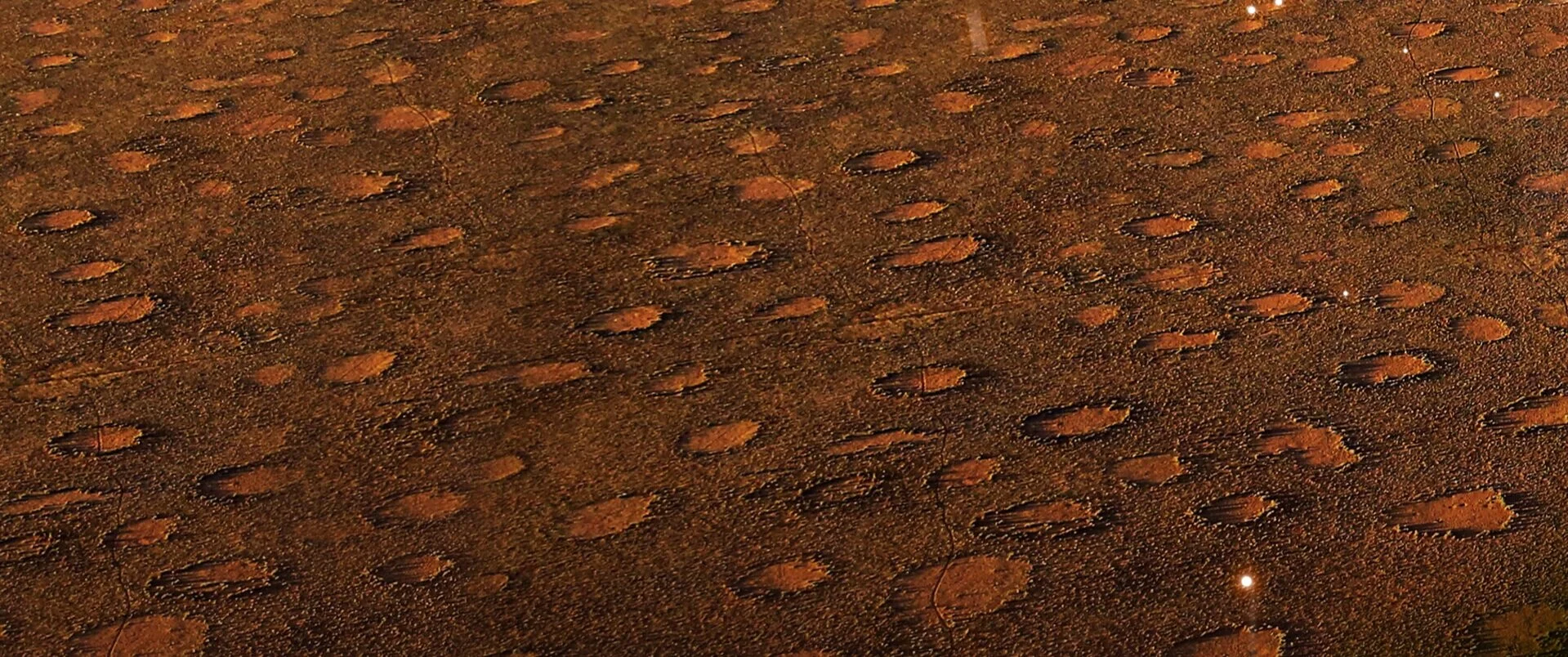There are many striking and mysterious patterns in the hallowed ground we call Mother Earth, some created by ancient civilisations. Their true impact can often only be appreciated from the air.
Like Joe in the opening chapter of my novel, I first witnessed the African Fairy Circles in Namibia from a plane. I was puzzled and then bewitched. It was as if the Earth’s face had erupted in a kind of acne. Or, as one documentary rather more romantically put it, as if the desert was “mimicking a mackerel sky” of scattered clouds.
Fairy Circles are one of the great, unsolved mysteries of Nature.
There are tens of thousands of them. They stretch about fifteen hundred miles, north to south from southern Angola, through Namibia, to the Orange River in South Africa. They are a band about a hundred miles inland, in an arid no-man’s land between savannah and sand dunes.
In 2014 similar circles were discovered in Pilbara, Western Australia but they exist nowhere else on Earth.
The Fairy Circles vary typically between two and fifteen metres wide, although there are reports of circles up to twenty-five metres wide. They are circular patches of barren land often encircled by a ring of grass. The soil at the centre of the circles is wet and dark when you dig down, but contains no organisms. The soil is dry around the so-called “luxury belt” of grasses that ring them. This has led to the view that the circles are “water traps” created by the plants to keep them supplied through the long, dry season.
Scientific studies favour two causes for the circles: sand termites working underground that eco-engineer the landscape above their heads; and, as mentioned above, natural competition between desert grasses for scarce water and nutrients. Yet, after much study and mathematical modelling of their patterns, there is still no definitive scientific agreement about what forms the circles.
There are also ever-growing curiosities, such as the recently discovered similarities in patterns between the Fairy Circles and human skin cells.
Professor van Rooyen undertook a long-term project in 1978, hammering metal stakes into the centre of numerous circles. He returned to test them twenty-two years later and found that they hadn’t moved an inch.
Walter Tschinkel discovered by comparing satellite photos over time - from 1956 to 2006 - that the circles do have a lifecycle. Their lifespan differs between the smaller and larger circles, but they are born, mature and die, on average, across 45 to 60 years. Some can even reach the age of 100 or more. In other words, they have eerily similar lifespans to humans. It was this fact that totally gripped me and set my mind racing.
I then discovered that some of the Namibian tribespeople believe that each circle is the soul of an ancestor, or of someone slaughtered by foreign invaders. Or that they are the footprints of the Supreme Being.
These powerful myths and legends started to create others in my head. I started to think about what else might be causing the circles. Perhaps there were unknown sources of radiation from underground. Perhaps the circles are a giant message, an alphabet that could be decoded by mathematically modelling satellite photos.
As Sir Tim Smit, co-founder of the Eden Project, said: “We are a species bound together by stories and it is they that let our imagination take flight. Sometimes these stories are called myths and a huge idea springs into your mind...what if these aren’t stories? And you feel the hair stand up on the back of your neck.”





